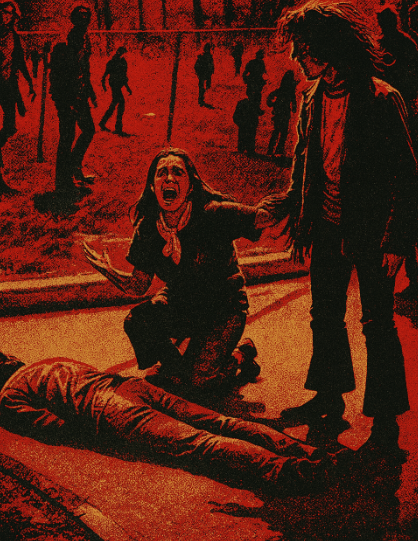
During War, What Shapes a Country’s Image?
A single photo can move a million people. But what decides whether they move toward you—or away from you?
A new scoping review of 56 studies (2015–2024) says a country’s wartime image rests on three pillars: history, diplomacy, and leadership.
Let’s break that down in plain language, with real-world touchpoints you can use in your lab, newsroom, policy shop, or classroom—anywhere in the world.
Why this matters where you live
Think of a market day in Kaduna, a newsroom in São Paulo, or a university lab in Pune. When conflict breaks out, aid, trade, and partnerships shift. That shift depends less on one fiery speech and more on a deeper mix: the stories nations tell about their past, how they work their networks, and who stands in front of the camera. That’s the part many of us don’t see—but here’s where it gets interesting…
What the researchers did (fast)
This was a scoping review—designed to map the big picture, not to crown a single “best” answer. The team searched Google Scholar, Scopus, and Web of Science, filtered English-language, peer-reviewed papers from 2015–2024, and charted patterns across 56 articles. The point was to identify which factors consistently appear when scholars explain why some wartime narratives “stick” globally and others don’t. Now to the findings…
Pillar 1: History—your reputational gravity
History acts like gravity: invisible, always pulling. Old wars, colonial memory, and national myths give audiences a “ready-made lens.” That lens influences how we judge intent (“Will this state keep its word?”), how we feel (sympathy or suspicion), and what analogies pop into our heads (David vs. Goliath, liberator vs. occupier).
- Global touchpoint: In India, references to colonial-era resistance can make today’s audiences more alert to power imbalances.
- In Nigeria, Biafra’s memory still shapes how people perceive civilian harm and humanitarian claims.
- In Brazil, democratic restoration stories color expectations for transparency and rule-of-law talk.
The twist? Overused comparisons (e.g., calling every foe “Nazi”) can backfire by polarizing audiences. So, history helps you—but only if the analogy fits. And here’s where it gets interesting…
Pillar 2: Diplomacy—credibility is a team sport
Diplomacy isn’t only closed-door talks; it’s alliance signals, humanitarian gestures, and steady public communication. A country’s partners act like character witnesses. Cultural diplomacy (exchanges, language institutes, film) builds a reservoir of goodwill you can draw on in a crisis. Quick, transparent crisis updates prevent rumors from filling the silence.
- Kitchen analogy: Think of a shared kitchen. If you’ve cleaned up after yourself for years, your housemates trust you when the stove goes boom. If you never clean, no statement will fix the smoke alarm at 2 a.m.
The tension: Digital megaphones amplify both your message and any mismatch between words and deeds. If your press release says “precision,” but the footage says otherwise, your credibility bill comes due—fast. But here’s where it gets interesting…
Pillar 3: Leadership—symbol, voice, and choices
Leaders personify the nation. Clothing, tone, and setting (a suit at a podium vs. fatigues in a shelter) signal values and risk. Strategic communication—especially direct, human, and consistent—can rally support. But no message survives contact with contradictory behavior. Crisis decisions (how you treat civilians, prisoners, journalists) are the receipts that audiences eventually check.
- Sport analogy: A captain’s halftime talk matters—but it only works if the team’s second-half play matches the promise. That scoreboard is public.
So, we thought image was about spin… but the data says it’s about coherence: history that resonates, diplomacy that’s steady, and leadership that acts like it speaks. Still, there’s more under the surface…
The amplifiers: Military, government, culture, geopolitics
These aren’t the core engine, but they tune how loud it sounds.
- Military conduct (following the laws of war) shapes moral judgment.
- Government credibility (democracy, rule of law, stable institutions) is the “background trust” that makes messages believable.
- Cultural proximity helps narratives travel—shared values and references reduce friction.
- Geopolitics frames expectations: allies, blocks, and rivalries pre-tilt the field.
Each factor is interpreted through the three pillars. A lawful military action gains more credit when it fits a known historical story and is explained by trusted diplomats and leaders. But here’s where it gets interesting…
The new battleground: Digital, emotional, and visual
The review spotlights emerging forces that many labs overlook:
- Digital technology speeds everything. Narratives launch and collapse in hours, not months.
- Affective investments: content that aims straight at emotion—sympathy, pride, outrage—often outperforms dry facts.
- Diversity of sources: soldiers, NGOs, and citizens now publish alongside states; control is shared, scrutiny is constant.
- Visual tropes—repeatable images like “the heroic defender” or “the child in rubble”—become shortcuts that audiences remember.
And yes, subliminal priming shows that subtle cues (e.g., “modern,” “traditional”) can shape preferences beneath awareness—a reminder that image is also cognitive, not just communicative. So, what can you do with this?
Practical takeaways you can use tomorrow
- Audit for coherence. Do your historical references, diplomatic messages, and leadership actions align? One contradiction can sink a month of messaging.
- Pre-build trust. Cultural exchanges and transparent institutions are “credit” you deposit before any crisis.
- Design for the visual feed. Your statements need a credible image (and caption) that travels well in WhatsApp and TikTok, not just a PDF.
- Center humane conduct. Following international law isn’t only right—it’s reputational armor.
- Measure emotion, not just clicks. Track reactions (empathy, anger) alongside reach; they predict persistence.
If you’re in a resource-limited setting, start small: document humane actions with verifiable visuals; maintain a single source of truth that updates fast; use local languages; recruit trusted community voices to relay updates. The science suggests these low-cost steps compound. And here’s where it gets interesting…
Let’s explore together
- Could this triad—history, diplomacy, leadership—help your organization communicate during any crisis, not just war? How?
- If you joined this research team, what would you test next: visual tropes, emotion metrics, or alliance-signal effects?
- What everyday problem in your context (floods, outages, misinformation) could benefit from this “coherence first” approach?



